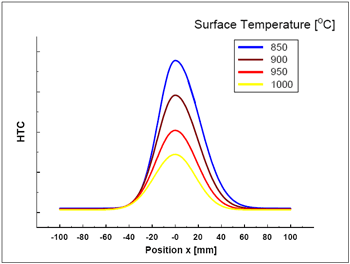
![]()
Phone +420 541 143 246, Fax +420 541 142 224, E-mail: heatlab@fme.vutbr.cz, www.heatlab.cz
Secondary Cooling in Continuous Casting
Secondary cooling system in continuous casting process is placed between crystallizer and tertiary cooling area, where the heat transfer is controlled by spraying of cooling water. A method of secondary cooling can strongly influenced the quality of billet, primarily regarding to the formation of internal and surface cracks. Quickly solidified surface shall hinder internal layer shrinking and the conditions for initiation of crack arise. The reason can be either a high casting speed or unsuitable secondary cooling. Proper cooling intensity and homogeneity is the basic demand on cooling system. One fluid (water) or twin fluid (water-air) nozzles are typically used for billet surface spraying.
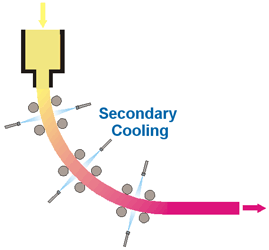
Mathematical Modeling of Cooling
Mathematical models are designed to give the temperature history of billet during continuous casting process. The methodology of solving internal heat conduction problem is well understood. The problems can be in boundary conditions. In the area of secondary cooling the heat flux removed from the billet surface can be expressed by
q = HTC(TS - T W ) + qR
where q is total heat flux, HTC is heat transfer coefficient, TS is surface temperature, TW is cooling water temperature and qR is radiation heat flux.
HTC depends on many parameters. The most essential are:
• Nozzle type (spraying angle, flowrate, impact density)
• Input parameters (water or water/air pressure)
• Geometrical parameters (distance from the surface, pitch between nozzles)
• Surface temperature
This complicated relationship is difficult to describe by a theoretically based formula. An experimentally based process HTC determination was developed in the Laboratory of Heat Transfer an Fluid Flow.
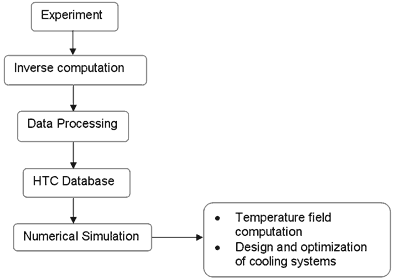
Experiment
The basic part of test stand is specimen made of an austenitic plate (size 600x320x30 mm). A set of thermocouples is embedded into a test plate and indicates temperatures at a certain depth from cooled surface. The method used here is a transient one.
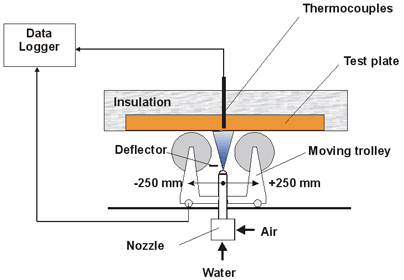
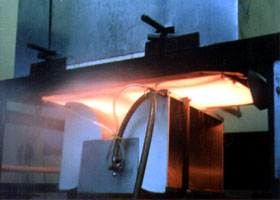
Inverse Computation
Output of inverse calculation is a file, containing information about measured temperature, surface temperature, heat flux and HTC for all measured points of the test plate.

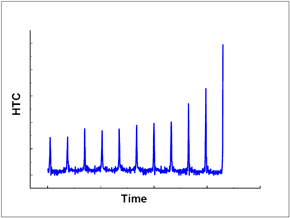
Data Processing
The objective of the final data processing is to obtain the function HTC = f(x,T) , where HTC is heat transfer coefficient, x represents the position and T represents the surface temperature. It was required from the approximating function f to provide a good approximation with a minimum number of coefficients and to make the meaning of the coefficient as transparent as possible. The following formula satisfies these demands:
![]()
The Gaussian function ![]() is used because of the high similarity to the measured data and the easy geometrical interpretation of coefficients σ and μ
is used because of the high similarity to the measured data and the easy geometrical interpretation of coefficients σ and μ
HTC Database
Results can be stored in the database in a form of set of approximation function coefficients or in a form of matrixes of numbers.
